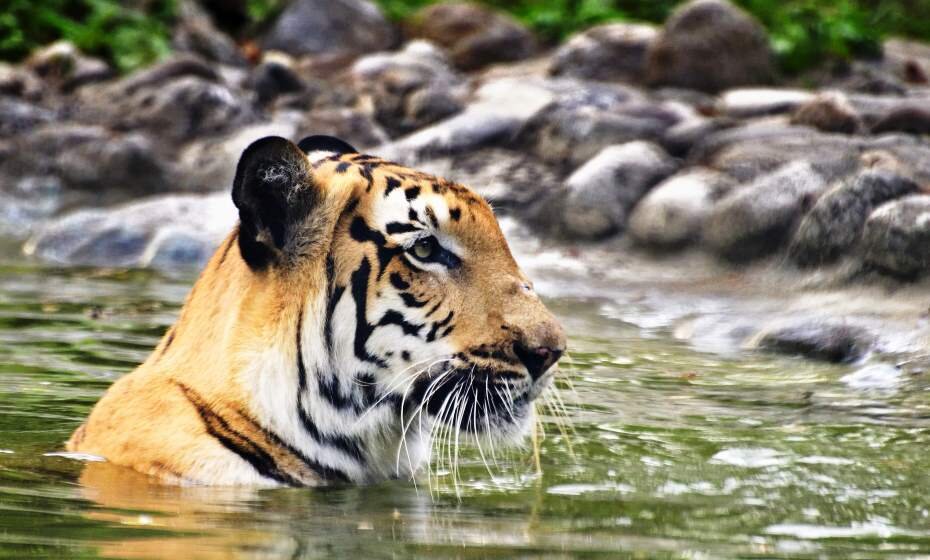Introduction: Nature’s Incredible Architecture
How Sundarban delta form: At the southern tip of the Indian subcontinent lies a sprawling, awe-inspiring network of rivers, forests, and islands known as the Sundarbans. But have you ever wondered how the Sundarban Delta form?
This natural marvel is not just a geographical wonder; it’s a living, breathing ecosystem that supports an astonishing variety of life. In this blog, we will delve into the fascinating story of the Sundarban Delta’s formation and why it remains one of the most unique landscapes on Earth.

Read more:
What Is a Delta and Why Is Sundarban Special?
In simple terms, a delta is a landform created at the mouth of a river, where the river meets a standing body of water like an ocean, sea, or lake. The Sundarban Delta is the largest delta in the world, formed by the confluence of three mighty rivers: the Ganges, the Brahmaputra, and the Meghna.
What sets the Sundarban apart:
- It stretches over 10,000 square kilometers across India and Bangladesh.
- It is home to the world’s largest mangrove forest.
- It supports endangered species like the Royal Bengal Tiger and the Irrawaddy dolphins.

How Sundarban Delta Form: The Geological Timeline
1. Millions of Years of River Activity
The formation of the Sundarban Delta began millions of years ago with the deposition of sediment carried by rivers originating from the Himalayas.
As the Ganges, Brahmaputra, and Meghna rivers descended through the plains, they picked up massive amounts of soil, clay, silt, and organic material.

When these rivers entered the Bay of Bengal, the decrease in flow speed caused the sediments to settle, gradually building up the delta.
2. Tidal Influence and Mangrove Colonization
The delta’s interaction with the tidal waves of the Bay of Bengal further shaped its complex network of estuaries, creeks, and islands. The high salinity of the coastal waters encouraged the growth of mangrove vegetation — plants uniquely adapted to survive in brackish water.
Over time, mangroves helped stabilize the delta soil and created a resilient natural habitat.

3. Continuous Evolution
Even today, the Sundarban Delta is dynamic. Seasonal floods, river course changes, and sediment deposition continue to reshape the land. Climate change and rising sea levels have also started influencing the delta’s formation and sustainability.
(External Reference: NASA Earth Observatory – Ganges Delta)
Key Features That Define the Sundarban Delta
- Interconnected Waterways: A maze of rivers, streams, and tidal creeks.
- Mangrove Dominance: Over 80 species of mangroves, including Sundari trees, which give the region its name.
- Unique Biodiversity: From tigers to estuarine crocodiles, the delta is a biodiversity hotspot.
- Dynamic Geography: Erosion and accretion constantly alter the shape and size of islands.
These features make it a living delta, not a static one.

Ecological Importance of the Sundarban Delta
Understanding how Sundarban Delta form also means recognizing its global ecological value:
- Natural Barrier: Protects coastal areas from cyclones and tsunamis.
- Carbon Sink: Mangroves absorb carbon dioxide, mitigating climate change effects.
- Biodiversity Haven: Supports rare and endangered species.
- Livelihood Provider: Supports millions of people through fishing, honey collection, and eco-tourism.
Threats to the Sundarban Delta
While the delta is remarkably resilient, it faces numerous threats:
- Climate Change: Rising sea levels could submerge low-lying areas.
- Deforestation: Unsustainable activities weaken natural defenses.
- Pollution: Industrial runoff and plastic waste impact river health.
Conservation efforts, like those supported by eco-conscious tour operators, are critical to the delta’s survival.
How to Experience the Sundarban Delta Responsibly
- Choose eco-tour operators who practice sustainable tourism.
- Respect local culture and biodiversity.
- Support conservation initiatives during your visit.
Exploring with Royal Sundarban Tourism ensures that your journey contributes positively to the region.

Plan Your Journey to the Heart of Nature
Now that you know how Sundarban Delta form, it’s time to see this majestic ecosystem up close. Traverse through winding rivers, marvel at dense mangrove forests, and witness wildlife in its raw, untamed form.
You can book authentic, eco-friendly Sundarban tours with:
- Maity Tourism
- Sundarban Boat Tourism
All tours proudly powered by Argusdna.

Each tour is carefully curated to ensure you explore the best of the Sundarbans while supporting local conservation efforts.
Conclusion: Witness the Magic That Continues to Evolve
The Sundarban Delta is a dynamic miracle crafted by time, rivers, and tides. It stands as a testament to nature’s power and resilience. Knowing how Sundarban Delta form adds a deeper layer of appreciation when you walk its muddy trails, sail its serene waters, and gaze at its endless horizon.
When you choose Royal Sundarban Tourism for your journey, you are not just visiting a place — you are experiencing a living, breathing wonder of the world. Book your adventure today and witness the beauty that continues to evolve with every tide.
Email: info@royalsundarbantourism.com
Address: Sundarban. Gosaba Market Durga Mandir Road, Pin – 743370, West Bengal, India

